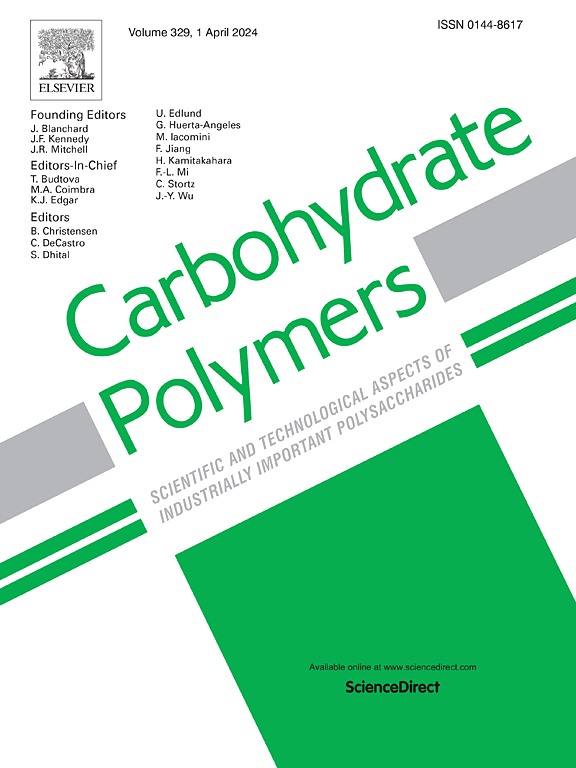A novel multifunctional self-assembled nanocellulose based scaffold for the healing of diabetic wounds
IF 10.7
1区 化学
Q1 CHEMISTRY, APPLIED
引用次数: 0
Abstract
The healing of chronic diabetic wounds remains a key challenge due to its susceptibility to bacterial infection, the inflammatory wound microenvironment, and difficulty in angiogenesis. Herein, we devised a smart scaffold of nanocellulose with silk fibroin-loaded cerium oxide nanoparticles for the treatment of diabetic wounds. The smart scaffold dressing displays excellent porosity, water absorption, air permeability, water retention, controlled degradability, and antioxidant properties. In vitro experiments demonstrated that the scaffold was capable of promoting the degradation of the scaffolds through uncross linking and exhibited antibacterial activity against both Gram-positive (S. aureus) and Gram-negative (E. coli) bacteria. Furthermore, in vivo experiments showed that smart scaffold dressing can reduces inflammation at the wound site of diabetic mice and promote collagen deposition, angiogenesis and re-epithelialization during wound healing in diabetic mice, exhibiting favorable biocompatibility and biodegradability. Its efficacy surpassed that of the current commercially available membrane dressings (3 M dressings) and medical PELNAC dressings (Class III medical device). These findings suggest that the smart scaffold dressing is a promising and innovative dressing for the treatment of diabetic wounds.

一种新型多功能自组装纳米纤维素支架用于糖尿病伤口愈合
由于慢性糖尿病伤口易受细菌感染、炎症性伤口微环境和血管生成困难,其愈合仍然是一个关键的挑战。在此,我们设计了一种带有丝素负载氧化铈纳米颗粒的智能纳米纤维素支架,用于治疗糖尿病伤口。智能支架敷料具有优异的孔隙率、吸水性、透气性、保水性、可控降解性和抗氧化性能。体外实验表明,该支架能够通过非交联促进支架的降解,并对革兰氏阳性(金黄色葡萄球菌)和革兰氏阴性(大肠杆菌)细菌均具有抗菌活性。此外,体内实验表明,智能支架敷料可以减轻糖尿病小鼠创面部位的炎症,促进糖尿病小鼠创面愈合过程中的胶原沉积、血管生成和再上皮化,具有良好的生物相容性和生物降解性。其功效超过了目前市售的膜敷料(3m敷料)和医用PELNAC敷料(III类医疗器械)。这些发现表明,智能支架敷料是治疗糖尿病伤口的一种有前途的创新敷料。
本文章由计算机程序翻译,如有差异,请以英文原文为准。
求助全文
约1分钟内获得全文
求助全文
来源期刊

Carbohydrate Polymers
化学-高分子科学
CiteScore
22.40
自引率
8.00%
发文量
1286
审稿时长
47 days
期刊介绍:
Carbohydrate Polymers stands as a prominent journal in the glycoscience field, dedicated to exploring and harnessing the potential of polysaccharides with applications spanning bioenergy, bioplastics, biomaterials, biorefining, chemistry, drug delivery, food, health, nanotechnology, packaging, paper, pharmaceuticals, medicine, oil recovery, textiles, tissue engineering, wood, and various aspects of glycoscience.
The journal emphasizes the central role of well-characterized carbohydrate polymers, highlighting their significance as the primary focus rather than a peripheral topic. Each paper must prominently feature at least one named carbohydrate polymer, evident in both citation and title, with a commitment to innovative research that advances scientific knowledge.
 求助内容:
求助内容: 应助结果提醒方式:
应助结果提醒方式:


